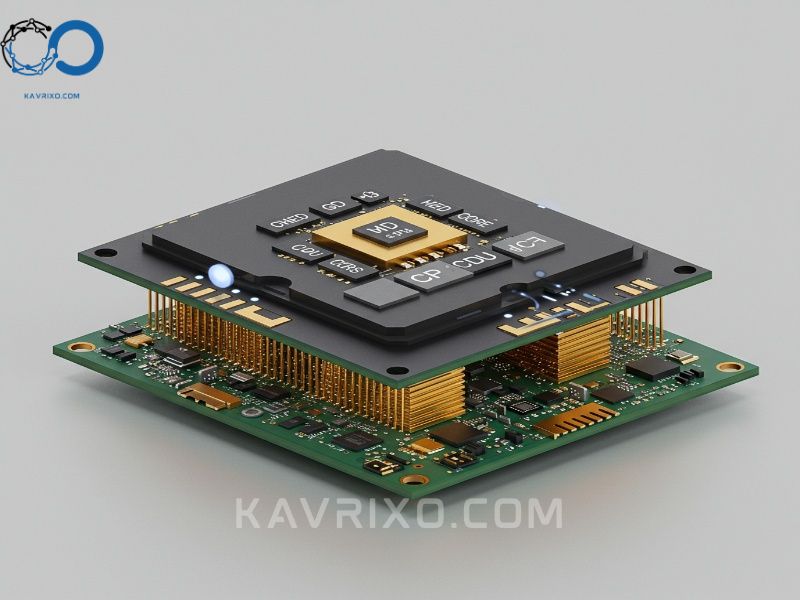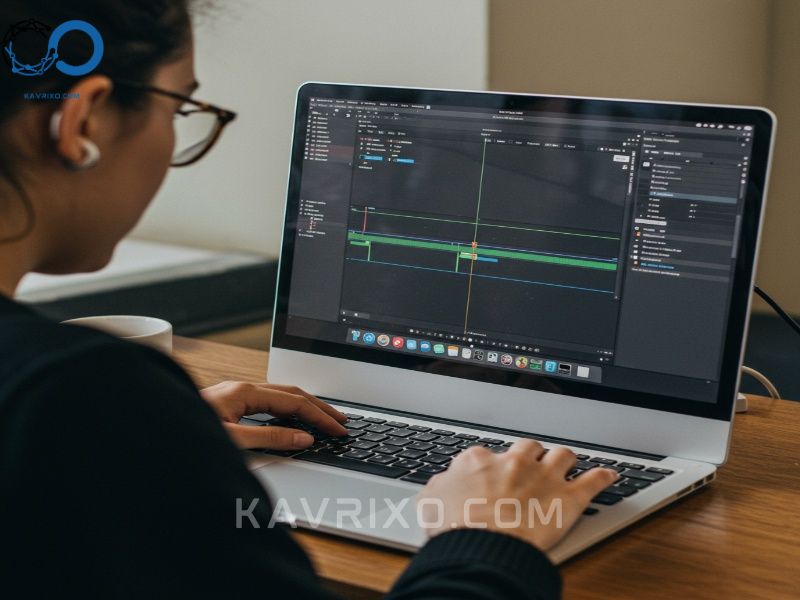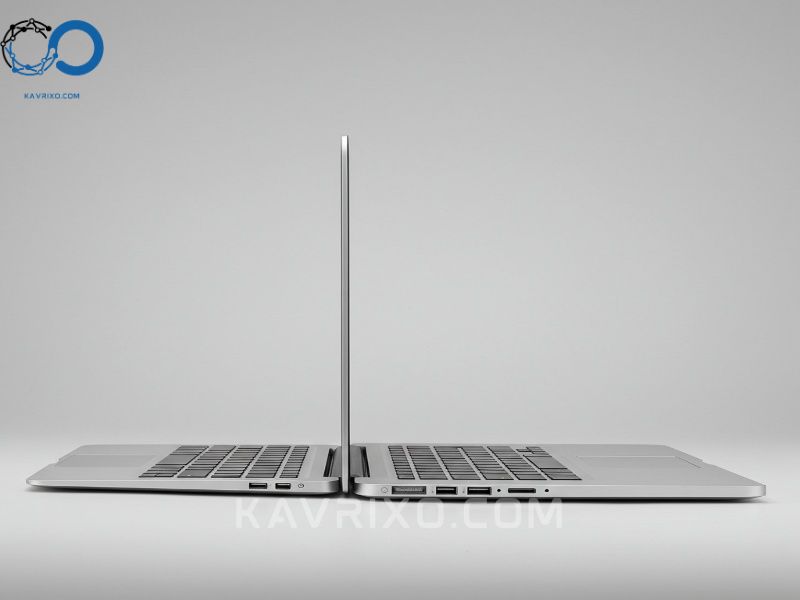Choosing the right laptop for college is arguably one of the most critical decisions you’ll make before stepping foot on campus. It’s not just a tool for writing papers; it’s your textbook, your communication center, your entertainment hub, and sometimes, your sanity keeper during late-night study sessions.
For decades, the debate has raged: PC or Mac? While the PC landscape offers unparalleled variety and affordability, the sleek, unified experience of the Apple MacBook has long held a powerful appeal. But the question remains, especially given the significant investment required: are MacBooks good for college?
As someone who has advised hundreds of students—from graphic designers to mechanical engineers—on their tech purchases, I can tell you that the answer today is a resounding yes, but with crucial caveats. The introduction of Apple’s M-series chips (M1, M2, M3) has fundamentally changed the conversation, transforming MacBooks from niche creative tools into powerhouse, ultra-efficient machines perfectly suited for the rigors of university life.
If you’re wrestling with this choice, stick with me. We’re going to break down performance, battery life, cost, and, most importantly, help you figure out which macbook is best for college based on your specific major and needs.
Contents
The Core Strengths: Why Students Love MacBooks
When we look at the demands of college life—portability, reliability, and endurance—MacBooks consistently score near the top. They aren’t just expensive status symbols; they are meticulously engineered tools built to handle years of abuse in a backpack.
Unmatched Battery Life: The All-Day Advantage
Let’s be honest: hunting for an outlet in a crowded lecture hall or during a marathon study session at the library is the absolute worst. If there is one single feature that makes MacBooks, particularly the MacBook Air, the best macbook for students, it is the phenomenal battery life delivered by the Apple Silicon chips.
Before the M-series revolution, “all-day battery” was often wishful thinking. Now, it’s a reality. I regularly see students getting 15 to 18 hours of real-world use out of a MacBook Air (M2 or M3) while doing typical student tasks like research, writing, and video conferencing.
This is a game-changer for students who need to move seamlessly from a morning class to an afternoon lab and then to an evening group meeting without lugging around a charger. This freedom from the wall socket is invaluable on a busy campus.

Exceptional Reliability and Longevity: Future-Proofing Your Investment
College is tough on hardware. Laptops get jostled, spilled on, and constantly opened and closed. Apple’s build quality—the unibody aluminum chassis—is legendary. These machines are durable.
Beyond physical resilience, MacBooks offer superior longevity in terms of software support. Apple typically provides major operating system updates (like macOS Sonoma or macOS Ventura) for 6 to 8 years after a machine’s release. This means the MacBook you buy as a freshman will likely still be receiving security patches and new features when you graduate and well into your first job.
This longevity contributes directly to a lower Total Cost of Ownership (TCO). While the initial price tag might be high, the reliable performance and excellent resale value mean you are essentially investing in a machine that won’t need replacing halfway through your degree.
Superior Ecosystem Integration: Seamless Workflow
If you already own an iPhone or an iPad, the macOS ecosystem integration is an enormous productivity booster that truly justifies the expense and helps answer why are macbooks good for college. Features like:
- Handoff: Starting an email on your iPhone and finishing it instantly on your MacBook.
- Universal Clipboard: Copying text or an image on your Mac and pasting it on your iPad.
- AirDrop: Instantly sharing large files, photos, or notes with classmates who also use Apple devices.
- Continuity Camera: Using your iPhone as a high-quality webcam for Zoom lectures or virtual study groups.
These aren’t gimmicks; they are time-savers. In the fast-paced, multi-device environment of college, seamless switching between devices helps you maintain focus and efficiency.
Security and Privacy Features
In a world increasingly concerned with data security, MacBooks offer robust protection right out of the box. Features like FileVault encryption, Touch ID authentication, and the tightly controlled App Store ecosystem mean students are less likely to encounter debilitating malware or viruses that could derail a final paper deadline. Apple’s dedication to privacy is a significant benefit, reducing the likelihood of your personal data being compromised while using campus Wi-Fi networks.
Addressing the College Workload: Performance Deep Dive
The M-series chips have eliminated the previous performance gap that often steered power-users toward high-end Windows machines. Today, the question isn’t whether a MacBook can handle college work; it’s how much power you actually need.

Everyday Tasks: Notes, Browsing, Documents
For 80% of college students—those in humanities, business, social sciences, or general studies—the base model MacBook Air is more than sufficient.
Your daily routine involves:
- Running 20+ Chrome tabs (we all do it).
- Simultaneously using Microsoft Word, PDF readers, and reference managers (Zotero, Mendeley).
- Streaming lectures and background music.
- Video conferencing (Zoom/Teams).
The efficiency of the M-series chips means that even the entry-level MacBook Air handles these demanding multitasking loads without the fan kicking on or the system slowing down. This cool, silent operation is a massive advantage in quiet study areas or during long lectures.
Creative Majors: Video Editing, Design, Music Production
This is where MacBooks truly shine and historically earned their reputation. If you are studying film, graphic design, architecture, or music, the MacBook Pro line, specifically, offers unparalleled performance optimization.
- Video Editing: Applications like Final Cut Pro and DaVinci Resolve are heavily optimized for Apple Silicon. The unified memory architecture allows the CPU and GPU to share data incredibly fast, meaning rendering 4K video is significantly faster than on comparable Windows machines, especially those not running dedicated professional GPUs.
- Design: Photoshop, Illustrator, and other Adobe Creative Cloud applications run natively and flawlessly. The stunning Liquid Retina XDR displays on the MacBook Pro models offer professional-grade color accuracy, which is non-negotiable for serious design work.
- Music Production: Logic Pro X is Apple’s own software, providing incredible integration. Low latency and the ability to run dozens of tracks and plugins without issue make the MacBook Pro the industry standard for music students.
If your major relies heavily on these creative applications, the performance justification for a MacBook Pro is clear and makes it arguably the best macbook for students in those fields.

STEM and Coding Needs: Software Compatibility Concerns
For STEM students (Engineering, Computer Science, Data Science), the MacBook performance is generally stellar, but compatibility can be a sticking point.
- Coding: MacBook Pros are incredibly popular in the Computer Science community. Unix-based macOS is highly compatible with most development tools, command-line interfaces, and popular languages (Python, JavaScript, Swift).
- Engineering: This is the primary area of concern. Highly specialized engineering software, such as certain CAD programs (e.g., SolidWorks) or specific simulation tools (e.g., proprietary finite element analysis software), may require Windows to run optimally, or even to run at all. While you can run Windows on modern MacBooks using virtualization software like Parallels, this adds complexity and cost.
- Data Science: Tools like R, Python libraries (Pandas, NumPy), and machine learning frameworks (TensorFlow) run excellently on macOS. The high-speed unified memory in M-series chips is a massive advantage for large dataset processing.
If your degree mandates specific Windows-only software, you must factor in the cost and effort of running Parallels, or seriously consider a high-end Windows laptop. However, for most general STEM needs, MacBooks perform beautifully.
The Great MacBook Debate: Air vs. Pro for College
When evaluating which macbook is best for college, the choice usually boils down to the Air vs. the Pro. The difference is no longer just processor speed; it’s about sustained performance, display quality, and port selection.
The M-Series MacBook Air: The Student Champion
For the vast majority of students (I would estimate 90%), the MacBook Air is the ideal machine. It hits the perfect sweet spot of portability, performance, and price.
Why the Air is the Best MacBook for Students:
- Price: It offers the most accessible entry point into the Apple ecosystem, especially with student pricing.
- Portability: It is incredibly light (often under 3 lbs) and thin, making it effortless to carry across campus all day.
- Efficiency: It is fanless. This means silent operation—essential for libraries, testing centers, and quiet dorm rooms. You sacrifice some sustained peak performance, but for burst workloads (opening large files, quick renders), it feels just as fast as the Pro.
Recommendation: Opt for the 15-inch Air if you value screen real estate for multitasking, or the 13-inch Air if portability is your absolute top priority. Crucially, try to upgrade the unified memory (RAM) to 16GB if your budget allows. While 8GB is fine for basic web browsing and documents, 16GB ensures the machine remains snappy for 4-5 years of heavy multitasking.

The MacBook Pro: When Power is Non-Negotiable
The MacBook Pro (available in 14-inch and 16-inch models) is reserved for the student who truly needs professional-grade sustained power.
Who Needs a Pro?
- Creative Professionals: Film editors, 3D artists, and high-level music producers who run processor-intensive tasks for hours every day.
- Advanced Coders/Engineers: Those compiling massive codebases, running virtual machines (VMs), or heavy data simulations.
- Display Enthusiasts: Students needing the Liquid Retina XDR display’s extreme brightness and color accuracy for professional work.
The Pro models include active cooling (fans), which allows the M-series chip to maintain its peak performance for much longer without thermal throttling—a critical factor for sustained, intense workloads. They also offer crucial quality-of-life improvements like a wider array of ports (HDMI and SD card slots), eliminating the need for some dongles.
Portability and Weight Considerations
This might sound minor, but weight matters immensely when you’re walking a mile between classes carrying textbooks.
- MacBook Air (13-inch): Approximately 2.7 lbs. Effortlessly portable.
- MacBook Pro (16-inch): Approximately 4.7 lbs. Noticeably heavy in a backpack alongside books.
If you plan to use your laptop primarily in your dorm room and a few dedicated study spots, the weight of the Pro is acceptable. If you are constantly moving around campus, the Air will be your best friend.
The Practical Realities: Cost and Maintenance
Let’s face the elephant in the room: the cost. When asking are MacBooks good for college, the price tag often gives students pause. It’s a significant investment compared to many budget Windows laptops.
Analyzing the Initial Investment (The “Apple Tax”)
MacBooks are premium products, and they carry a premium price. A comparable Windows machine with similar specs (CPU, RAM, SSD) might cost 10–20% less. This difference is often called the “Apple Tax.”
However, I encourage you to look beyond the sticker price and consider what that premium buys you:
- Integrated Hardware/Software: Apple controls the entire stack, leading to optimization that PC makers cannot match (especially the integration of the M-series chips).
- Build Quality: Superior materials and manufacturing lead to fewer hardware failures.
- Ecosystem Value: The seamless experience we discussed earlier.
Total Cost of Ownership (TCO)
The high sticker price is often offset by two factors essential for college budgeting:
- Longevity: Since the machine will likely last 5+ years without a significant performance drop, you avoid the need to purchase a replacement halfway through college, which often happens with cheaper, less reliable laptops.
- Resale Value: MacBooks retain their value better than almost any other consumer electronic device. A three-year-old MacBook Air in good condition can still fetch 50–60% of its original price, meaning the actual cost of using the machine for four years is surprisingly low.
If you buy a $800 Windows machine that lasts four years and sells for $150, your cost is $650. If you buy a $1,200 MacBook that lasts four years and sells for $600, your cost is $600. Sometimes, the premium product ends up being the cheaper solution in the long run.
Student Discounts and Refurbished Options
To make the purchase more manageable, always utilize student resources:
- Apple Education Store: Apple offers year-round discounts for students, often shaving $50–$150 off the price and frequently including bonus promotions (like free AirPods during the “Back to School” season).
- Refurbished MacBooks: Apple’s certified refurbished store is an outstanding resource. These machines are indistinguishable from new, include a full one-year warranty, and offer substantial savings. This is a great way to afford a higher-spec configuration (like 16GB RAM) that might otherwise be out of budget.
Potential Drawbacks and Compatibility Concerns
To give you a completely honest assessment of are MacBooks good for college, we must discuss the limitations. No computer is perfect, and MacBooks do present specific hurdles for some students.
Windows-Centric Software Requirements (Specific Course Needs)
As mentioned, the single biggest headache for MacBook users comes from required, niche university software that is built solely for Windows.
Common Culprits:
- Engineering CAD/CAE tools: While AutoCAD has a macOS version, many specialized tools used in advanced engineering classes (especially mechanical and civil) are Windows-only.
- Specific Business/Accounting Suites: Some university finance or accounting courses rely on proprietary software or required Excel add-ons that only function in the Windows version of Microsoft Office.
- Testing Software: Some universities use lockdown browser software for standardized testing that may not be fully optimized or compatible with the latest macOS versions.
If your degree explicitly requires Windows-only software, you have three options:
- Virtualization: Use Parallels Desktop to run a full version of Windows natively on your Mac. This works surprisingly well on M-series chips but requires purchasing the software license and a Windows license.
- Dual Laptop Strategy: Use the MacBook for 90% of your work and utilize campus computer labs for the few hours a week you need specialized Windows software.
- Buy a PC: If 50% or more of your required curriculum relies on Windows-only software, the hassle of virtualization might not be worth it.
Limited Port Selection (The Dongle Life)
Apple has aggressively pushed for USB-C/Thunderbolt ports, which are fantastic for high-speed connectivity but often leave students scrambling for adapters.
The MacBook Air usually only offers two USB-C ports and a MagSafe charging port. If you need to plug in an external monitor (HDMI), an old-school USB-A drive, and an SD card reader simultaneously, you will definitely need a USB-C hub or “dongle.”
The MacBook Pro mitigates this with built-in HDMI and SD card slots, but if you opt for the Air, factor in an extra $50–$100 for a quality multi-port hub. It’s a minor inconvenience, but one that can be frustrating when you’re trying to quickly connect to a classroom projector.

Gaming Limitations
If PC gaming is a major part of your stress relief, MacBooks are generally a poor choice. While the M-series chips have powerful GPUs and Apple is pushing game developers to port titles, the vast majority of AAA games are still optimized exclusively for Windows, utilizing DirectX.
You can play some games, and performance is improving, but if you need a machine for high-fidelity competitive gaming, you should look elsewhere. The MacBook is a productivity machine first and foremost.
Final Verdict: Are MacBooks Good for College?
Having laid out all the facts—the unparalleled battery life, the robust build quality, the M-series performance, and the ecosystem benefits—I believe the MacBooks are among the best macbook for students available today. They are powerful, reliable, and their high resale value makes the initial investment surprisingly manageable over four years.
The key is making the right choice between the Air and the Pro, and ensuring your major doesn’t have unavoidable Windows requirements.
Who Should Absolutely Buy a MacBook?
- The Mobility-Focused Student: If you value silence, long battery life (15+ hours), and minimal weight above all else.
- Creative Majors: If you study design, film, music, or photography, the optimized software and superior displays make the MacBook Pro a professional necessity.
- Ecosystem Users: If you already rely on an iPhone and iPad, the Continuity features will dramatically improve your workflow.
- General Studies/Humanities: The MacBook Air provides more than enough power while guaranteeing stability and longevity for your four years.
Who Might Be Better Off With a PC?
- Budget-Conscious Users: If you absolutely cannot stretch your budget beyond $800, there are excellent Windows laptops (like the higher-end Dell XPS or HP Spectre) that offer strong performance for less than a MacBook Air.
- Required Windows Software Users: If your specific engineering or science department mandates the use of Windows-only software for more than just occasional use.
- Serious Gamers: If your laptop needs to double as a high-performance gaming rig, a dedicated Windows gaming laptop will provide a far superior experience.
Ultimately, the MacBook offers a premium, consistent, and exceptionally reliable experience that minimizes technical distractions, allowing you to focus on your studies. When you’re running on three hours of sleep and racing to meet a deadline, reliability is priceless. In my professional opinion, choosing a MacBook—specifically the M-series MacBook Air—is one of the smartest tech choices you can make for your college career.

